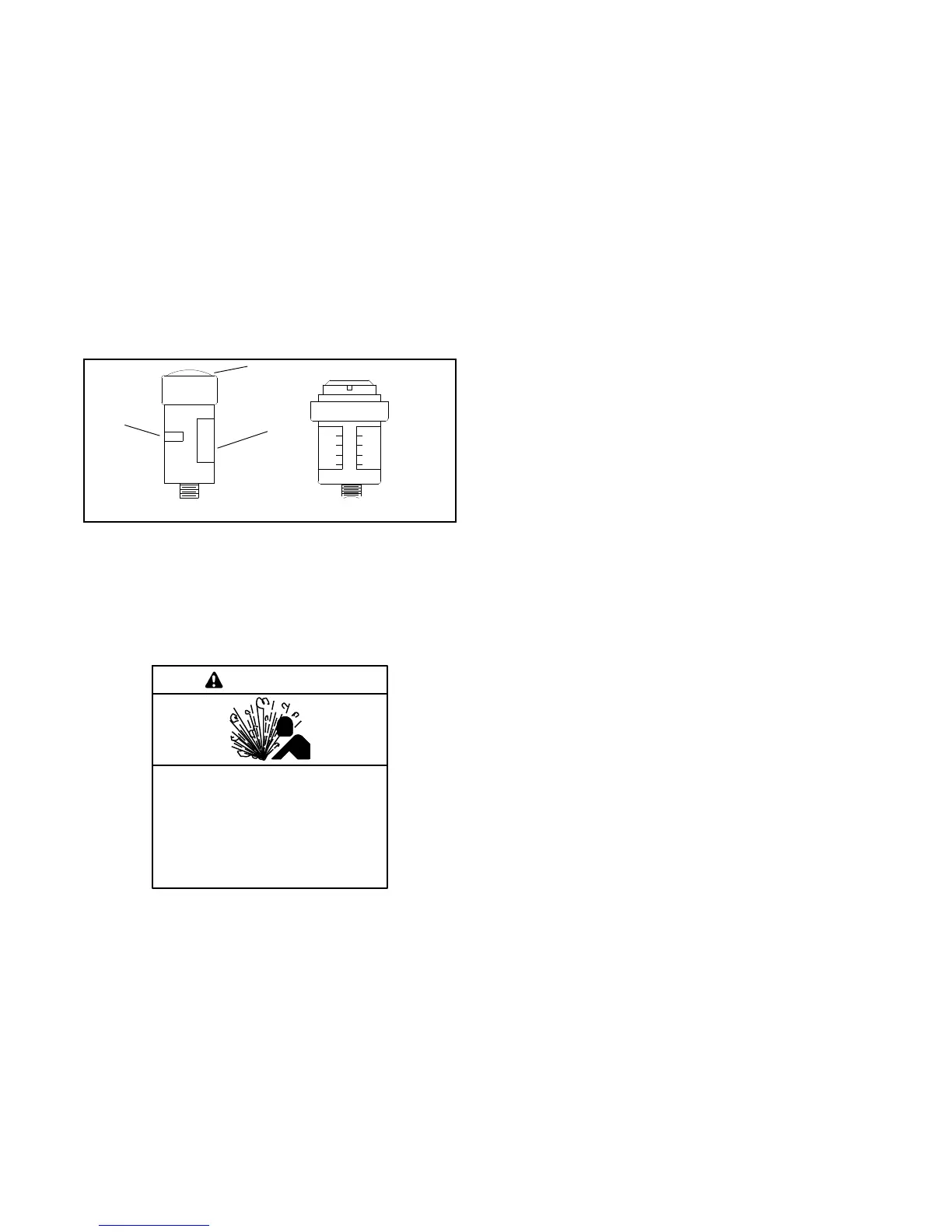TP-6694 7/1870 Section 3 Scheduled Maintenance
3.8 Air Cleaner Restrictor Indicator
(if equipped)
The air cleaner restriction gauge mounted on the air
cleaner(s) helps determine the air cleaner change
interval.
The air cleaner restriction gauge monitors air flow and
continuously displays restriction readings indicated as
vacuum (see Figure 3-6). Increased restriction
indicates a clogged air cleaner element.
As maximum allowable restriction is reached, the gauge
window turns red indicating the air cleaner element
needs replacement. To reset the gauge, push the gauge
top down and release.
273113
10
15
19
22
25
1
2
3
1. Push down to reset 2. Display 3. G auge window
Figure 3-6 Restriction Indicators (styles vary)
3.9 Cooling System
The cooling system maintenance information applies to
radiator-cooled models which have a radiator with a
pressure cap and coolant recovery tank.
Hot coolant and steam.
Can cause severe injury or death.
Before removing the pressure cap,
stop the generator set and allow it to
cool. Then loosen the pressure cap
to relieve pressure.
WARNING
Allow the engine to cool. Release pressure from the
cooling system before removing the pressure cap. To
release pressure, cover the pressure cap with a thick
cloth and then slowly turn the cap counterclockwise to
the first stop. Remove the cap after pressure has been
completely released and the engine has cooled. Check
the coolant level at the tank if the generator set has a
coolant recovery tank.
Note: Engine damage. Bleed the air from the cooling
system to prevent overheating and subsequent
engine damage.
Note: Block heater damage. The block heater will fail
if the energized heater element is not immersed
in coolant. Fill the cooling system before turning
on the block heater. Run the engine until it is
warm, and refill the radiator to purge the air from
the system before energizing the block heater.
3.9.1 Coolant Level Ch eck
Check the coolant level in the coolant recovery tank.
Maintain the coolant level between the high and low
marks.
Note: Periodically check the coolant level by removing
the pressure cap. Do not rely solely on the level in
the coolant recovery tank. Add fresh coolant until
the level is just below the overflow tube opening
of the filler neck.
3.9.2 Cooling System Component
Inspection
To prevent generator set shutdown or damage caused
by overheating:
D Keep the cooling air inlets clean and unobstructed.
D Inspect the radiator’s exterior for obstructions.
Remove dirt and foreign material using a soft brush or
cloth to avoid damaging the radiator fins.
D Check the hoses and connections for leaks. Replace
any cracked, frayed, or spongy hoses.
D Check the condition and tension of the radiator fan
and water pump belt(s). Follow the belt tension
procedure in this manual and/or the engine operation
manual.
D Check the pressure cap seal and replace a cracked or
deteriorated cap. Remove dirt and other debris from
the pressure cap and filler neck. The pressure cap
raises the boiling point of the coolant, enabling higher
operating temperatures. Replace a leaking pressure
cap with one rated for the same pressure. The
pressure cap rating usually appears on the pressure
cap.

